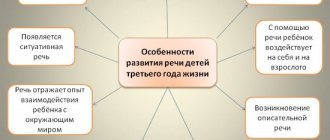Types of visual and expressive means
- Tropes (words with a figurative meaning): allegory, hyperbole, litotes, metaphor, metonymy, oxymoron, personification, periphrase, synecdoche, comparison, epithet.
- Stylistic figures of speech : anaphora, epiphora, parallelism, antithesis, non-union, polyunion, gradation, inversion, parcellation, ellipsis, rhetorical constructions.
- Sound writing : alliteration, assonance.
- Lexical means : archaisms, neologisms, occasionalisms, dialectisms, barbarisms, exoticisms, etc.
- Stanza , size, rhythm.
In this article we will tell you about the trails and what tasks can be associated with them.
Phonetic means
The term phonetic comes from the Greek word φωνή, which means “sound.” We are not talking about any sound - the knocking of a hammer, the barking of a dog or the rustling of leaves are not included in the scope of interests of phonetics; it deals with the sounds of human speech. Accordingly, phonetic means of expressiveness are based on the perception of speech sounds - phonemes.
There are three main phonetic means of expression.
- Alliteration. It implies the use of the same type of consonant sounds in a limited passage of text (for example, within a quatrain).
The forest slumbers under the fairy tale of sleep. (S. Yesenin)
A variant of the technique is the use of words starting with the same letter - “Scandinavian alliteration”, which is especially popular in English-language literature. An example is, in particular, the characters of “Harry Potter” by J. Rowling, whose first and last names begin with the same letter (Severus Snape, Hermione Granger, etc.), or posters with public service announcements from “The End of a Chapter” by J. Galsworthy (“ The betting is a waste of thousands."
- Assonance. Using the same vowel sounds within a line, stanza, or sentence.
Breathing in perfumes and mists, she sits by the window. (A. Blok)
- Onomatopoeia. Transmission using phonetic means of sounds of the surrounding world - thunderclaps, the sound of horse hooves on cobblestones, the rustling of tires on the road or mice in the underground.
And the thunder roared continuously, and the winds raged in the wilds. (K. Ryleev)
The use of phonetic techniques is called sound writing, since with the help of the selection of phonemes in a literary work, a bright, “voiced” picture is drawn that stimulates the reader’s imagination.
What is allegory in literature
Allegory
Allegory is a trope; figurative expression; transfer of meanings from one subject to another; — isolation of concepts through an artistic image.
Functions of allegory
- increased imagery;
- creation of special expressiveness.
| Examples: | |
| Allegories can be introduced by the author from old fables and fairy tales, since they arose on the basis of myths. | |
| Fox | deceit |
| Wolf | greed |
| Snake | deceit |
| Bird | freedom, liberation |
| Libra, Themis | justice, impartiality |
| Scythe, Hades | death |
Hyperbola
Hyperbole is a trope; figurative expression; exaggeration that sharply emphasizes the strength or significance of some phenomenon.
Hyperbole is a figurative and expressive means opposite to litotes.
Hyperbola functions
- achieving a comic or satirical effect;
- emphasizing the predominance of a phenomenon over others;
- creation of special expressiveness.
| Examples: |
| “I lived a hundred lives , And I was with you only for a moment.”; “I, and you too, have eternity in reserve ...”; “ In a hundred and forty suns the sunset was burning ”; “If I wake up before the sun and wake up at midnight, then I’ll crush the mountain. ” |
Litotes
Litota - trope; figurative expression; an understatement that emphasizes the lack of strength or weakening of the significance of some phenomenon.
Functions of litotes
- emphasizing the insignificance of a phenomenon;
- creation of special expressiveness;
- achieving a comic or satirical effect.
| Examples: |
| “I have lived a hundred lives without you, And I was with you only for a moment ”; “I go outcast, homeless and poorer than the last poor. ” |
Metaphor
Metaphor - trope; figurative expression; hidden comparison.
Usually expressed through a noun or verb.
For ease of understanding, we advise you to transform the proposed expression with a noun into a comparison (Golden, ripe fruits - fruits like gold), this way you will accurately define the metaphor. If the comparison (specifically with a noun) fails, then you made a mistake.
Functions of metaphor
- increased imagery;
- creation of special expressiveness.
| Examples: |
| “ The seething cauldron of the universe ” (the universe is like a seething cauldron); “And the sun’s yellow swords pierced the first hour of midday” (the rays of the sun are like yellow swords); “ The forest is full of silence . And yellow leaves. Flocks of birds left nature: the concert hall was left without artists ” (the forest as a concert hall); “Today there was a wonderful rain – Silver carnation with a diamond head ” (rain like a carnation) |
Metonymy
Metonymy - trope; figurative expression; replacing one word or expression with another based on similar meanings.
Functions of metonymy
- noticeable shortening of the author's thoughts;
- increased expressiveness.
| Examples: |
| “ Egypt went home ” (not Egypt, but the inhabitants of Egypt); “Tormented by the madness of Melpomene , in this life I thirst only for peace...” (not by Melpomene herself, but by the tragedy played in the theater (Melpomene is the muse of tragedy)). “ No one will offend the Field of Gaia “If not on silver, I ate on gold ” (not on gold in the literal sense, but on dishes made of gold); “ Watercolor in the grip of an old baguette seemed dull ” (baguette - frame made of baguette); “ Hearing the smell of foam ” (foamy is alcohol). |
Lexical means of expression
The word is the basis of visual expressiveness of speech. Many words are often used not only in their direct lexical meaning. The characteristics of animals are transferred to the description of a person’s appearance or behavior - clumsy like a bear, cowardly like a hare. Polysemy (polysemy) is the use of a word in different meanings.
Homonyms are a group of words in the Russian language that have the same sound, but at the same time carry different semantic loads, and serve to create a sound game in speech.
Types of homonyms:
- homographs - words are written the same way, change their meaning depending on the emphasis placed (zamOk - zAmok);
- Homophones - words differ in one or more letters when written, but are perceived equally by ear (fruit - raft);
- Homoforms are words that sound the same, but at the same time refer to different parts of speech (I’m flying on an airplane - I’m treating a runny nose).
Puns are used to give speech a humorous, satirical meaning; they convey sarcasm well. They are based on the sound similarity of words or their polysemy.
Synonyms - describe the same concept from different sides, have different semantic load and stylistic coloring. Without synonyms it is impossible to construct a bright and figurative phrase; speech will be oversaturated with tautology.
Types of synonyms:
- complete - identical in meaning, used in the same situations;
- semantic (meaningful) - designed to give color to words (conversation);
- stylistic - have the same meaning, but at the same time relate to different styles of speech (finger);
- semantic-stylistic - have a different connotation of meaning, relate to different styles of speech (make - bungle);
- contextual (author's) - used in the context used for a more colorful and multifaceted description of a person or event.
Antonyms are words that have opposite lexical meanings and refer to the same part of speech. Allows you to create bright and expressive phrases.
Oxymoron
Oxymoron (Oxymoron) - trope; figurative expression; connection of two contradictory meanings; connection of the incompatible.
Functions of an oxymoron
- focusing readers' attention;
- unusual reflection of feelings;
- expresses the thoughts of the poet/lyrical character about the presented phenomenon
| Examples: |
| “He lies to you so richly and so poorly !”; “ The eternal moment ”; “ I ask the beggar for bread , I give to the rich for poverty , ... I hand over the key to the robber , I blush the pallor with whitewash .”; “Even then there was no place ! Even then on earth there was a home for me everywhere .”; “And in my eyes there is always Hot snow , bloody snow” |
Types of stylistic figures
| Name of syntactic structure | Description |
| Anaphora | Using the same syntactic constructions at the beginning of adjacent sentences. Allows you to logically highlight a part of the text or a sentence. |
| Epiphora | Using the same words and expressions at the end of adjacent sentences. Such figures of speech add emotionality to the text and allow you to clearly convey intonation. |
| Parallelism | Constructing adjacent sentences in the same form. Often used to enhance a rhetorical exclamation or question. |
| Ellipsis | Deliberate exclusion of an implied member of a sentence. Makes speech more lively. |
| Gradation | Each subsequent word in a sentence reinforces the meaning of the previous one. |
| Inversion | The arrangement of words in a sentence is not in direct order. This technique allows you to enhance the expressiveness of speech. Give the phrase a new meaning. |
| Default | Deliberate understatement in the text. Designed to awaken deep feelings and thoughts in the reader. |
| Rhetorical appeal | An emphatic reference to a person or inanimate objects. |
| A rhetorical question | A question that does not imply an answer, its task is to attract the attention of the reader or listener. |
| Rhetorical exclamation | Special figures of speech to convey expression and tension of speech. They make the text emotional. Attract the attention of the reader or listener. |
| Multi-Union | Repeated repetition of the same conjunctions to enhance the expressiveness of speech. |
| Asyndeton | Intentional omission of conjunctions. This technique gives the speech dynamism. |
| Antithesis | A sharp contrast of images and concepts. The technique is used to create contrast; it expresses the author’s attitude towards the event being described. |
Tropes, figures of speech, stylistic means of expression, and phraseological statements make speech convincing and vivid.
Such phrases are indispensable in public speeches, election campaigns, rallies, and presentations. In scientific publications and official business speech, such means are inappropriate - accuracy and persuasiveness in these cases are more important than emotions. Previous articlePreviousNext articleNext
Personification
Personification - trope; figurative expression; endowing inanimate objects with the properties of animate ones (the ability to think, speak, feel and act).
Impersonation functions
- increased imagery;
- creating expressiveness;
- reflection of the author's position through the choice of associative series.
| Examples: |
| “For the first time , the moon these chains and trembling... Sculpts a bust not sculpted by anyone”; “Spring, I’m from the street, where the poplar is surprised , Where the distance is afraid , Where the house is afraid to fall ,”; “And the streets of ancient Prague are silent , winding one another, But they play like ravines .” “Turning its face to the south, the Pine squints in the sun .” |
Periphrase
Periphrase - trope; figurative expression; replacing the name of a phenomenon or the name of a person by describing their essential features or indicating their characteristic features.
Paraphrase functions
- designation of a person, phenomenon, object;
- expression of the author's position;
- richness of speech by avoiding repetition.
| Examples: |
| “Here the horde followed the horde. Bringing fire and chains !” (fire and chains - war); “So to speak, a slave of honor ... struck down by a bullet...” (slave of honor - Pushkin); “ The Volga Stronghold , But the blind huts cannot be helped” (Volzhskaya Stronghold - Volgograd) |
Rhetoric: Workshop
Modern court orators approach the means of artistic expression differently. Some believe that oratory in court should not be bright, emotional and that, in connection with this, there is no need to use means of embellishment of speech. Others are convinced that judicial speech, like any other, can be more effective if the speaker uses rhetorical tropes and figures. We consider ourselves to be among the latter and believe that the means of artistic expression that court orators of the past used in their speeches should be studied in detail by future lawyers. That is why we will define the main rhetorical artistic means and illustrate them with examples from famous court speeches.
1 group
Visual means (tropes)
Trope is a word or figure of speech used figuratively to achieve greater expressiveness.
| Hyperbole is a figurative expression containing an exorbitant exaggeration of size, strength, meaning, etc. any phenomenon. | “And this, of course, is extremely dangerous. And it leads to the fact that no one feels safe anymore. I want to emphasize this - no one feels safe! Because no one can hide behind international law, like behind a stone wall...” (“Munich Speech by V.V. Putin, 02/10/2007”). “For dozens of years the manager sucked their strength, for decades with satanic cunning he entangled them in a network of conditions, contracts, penalties...” (F.N. Plevako “Defensive speech in the case of the Luthorian peasants”). |
| Irony is an allegorical word in which various phenomena of life are identified not by contiguity or similarity, but by their contrast. The word "irony" is used to denote a mocking attitude towards life. By deliberately, as if pretending, calling the small big, the stupid smart, the ugly beautiful, the speaker can express his disdainful attitude. | “It suddenly seemed somehow inconvenient and dangerous to them to leave without the rods Russia, which for so long had led its history next to the rod - Russia, which, in their deep conviction, had developed into a vast power and achieved its greatness almost thanks to the rods” ( A.P. Aleksandrov. “Defensive speech in the case of V. Zasulich”). |
| Litotes is a trope that is the opposite of hyperbole and consists of an obviously implausible, exorbitant understatement of properties, qualities, attributes, sizes, strength, meaning, etc. any phenomenon. | “If the managers of the enterprise received, as you heard from the victim, considerable sums, then the ordinary members of the team received pennies” (Yu.A. Kostanov. “Defensive speech in the case of a victim of financial pyramids”). |
| A metaphor is a word or expression that is used figuratively based on the similarity in some respect of two objects or phenomena. | “With just the name of each of the cases, unique types of evil, precious in their vitality, emerge at once, raised by them from the troubled waters of modern society” (“Indictment of Comrade Prosecutor N.V. Muravyov in the Jacks of Hearts case”). “The Luthorian peasants found themselves in such a maelstrom where ordinary measures would be terrible and inhumane...” (F.N. Plevako. “Defensive speech in the case of the Luthorian peasants”). |
| Metonymy is a word or expression that is used figuratively on the basis of an external or internal connection between two objects or phenomena. | “This was truly an object lesson that showed Powers and his masters that in the Soviet country money and gold cannot save any spy from retaliation...” (USSR Prosecutor General R.A. Rudenko. “Indictment in the criminal case of an American spy pilot Francis Harry Powers"). |
| Personification is an image of inanimate or abstract objects in which they are endowed with the properties of living beings: the gift of speech, the ability to think, speak, feel. | “The rod reigned everywhere: at school, at a secular gathering, it was an indispensable accessory in the landowner’s stable, then in the barracks, in the police department...” (A.P. Aleksandrov. “Defensive speech in the case of V. Zasulich”). |
| Periphrasis (or periphrasis) is a turnover consisting of replacing the name of an object or phenomenon with a description of their essential features or an indication of their characteristic features. | “I think all this is certainly true. The agony, that is, reflex breathing, lasted no more than an hour” (S.A. Andreevsky. “Defensive speech in the Naumov case”). |
| Synecdoche is a type of metonymy based on the transfer of meaning from one phenomenon to another based on the quantitative relationship between them. | “Here it is, the bestial, misanthropic morality of Mr. Dulles and the company, which puts human life at nothing for the sake of the dollar, this “yellow devil”” (Prosecutor General of the USSR R.A. Rudenko. “Indictment in the criminal case of an American spy pilot Francis Harry Powers"). “But a peasant’s ruble is rare and comes at a high price” (F.N. Plevako. “Defensive speech in the case of Luthorian peasants”). |
| Comparison is a comparison of two phenomena in order to clarify one of them with the help of the other. | “So clouds rush across the once clear sky before a thunderstorm, but who can guess from which lightning will flash for the first time and thunder will thunder?... It was an idea, a temptation, an idea, despair, whatever you want, but not an “intention” and, moreover, “premeditated”…” (P.N. Obninsky. “Indictment in the Kachka case”). |
| An epithet is a word (most often an adjective or participle) that defines an object or action and figuratively emphasizes any characteristic property or quality in them | “Judicial practice confirms firsthand that repeat offenders have a pernicious influence on unstable young people...” (V.I. Tsarev. “Indictment in the case of the Kondrakov brothers”). |
Group 2 Syntactic figurative means (figures)
A figure is a special syntactic construction that gives expressiveness to speech.
| Anaphora (uniformity) is the repetition of individual words or phrases at the beginning of the passages that make up the statement. This type of lexical repetition allows you to draw the court’s attention to important points in the case, emphasize the significance of a fact, or clarify an idea. | “I believe, I deeply believe that today in the annals of Russian justice will not be a day for which society will blush... I believe that you will say today: “Be silent, law, the time has come for grace” (F.N. Plevako. “Defensive speech in the case of the Luthorian peasants"). “It was they who took to the streets of our city with weapons in their hands for four and a half years; It was they who attacked the collectors...; it was they who took away the money earned by others; It was they who killed people who tried to resist them” (A.Yu. Kostanov. “The Case of the Phantomas”). |
| Antithesis is a pronounced opposition of concepts or phenomena. Antithesis contrasts different objects and is often the strongest argumentative tool. | “...therefore, it is not so important for us what kind of person in front of us is a hero of labor or a lazy person, a romantic monogamist or a libertine, a drunkard or a teetotaler, a righteous person or a sinner. What is important for us, first of all, is whether he killed Pigolkina or not” (Yu.A. Kostanov. “The Pilipenko Case”). “Meanwhile, strange as it may seem, Naumov killed Charnetskaya precisely because he was a man and she was a beast” (S.A. Andreevsky. “Defensive speech in the Naumov case”). “Judge not with hatred, but with love, if you want the truth” (F.N. Plevako. “Defensive speech in the case of P. Kachka”). |
| Gradation is a stylistic figure consisting of such an arrangement of words in which each subsequent one contains an increasing (ascending gradation) or decreasing meaning, thereby creating an increase or decrease in the impression they make. | “Tell me: this good man also had to have something that would constitute his personal happiness, his rest, his consolation” (S.A. Andreevsky. “Defensive speech in the Andreev case”). |
| Inversion is a stylistic figure: a violation of the generally accepted word order in a given language. Rearranging words or parts of phrases gives speech a special expressiveness of judicial speech. | “Many citizens passing by that day saw two unfamiliar men wandering aimlessly along the edge of the forest. They seemed suspicious to some... but the idea of an attack in broad daylight in a fairly busy place seemed unlikely. The newlyweds Panfilovs didn’t think about it either....” (V.I. Tsarev. “Indictment in the case of the Kondrakov brothers”). |
| Parallelism is the identical syntactic construction of neighboring sentences or segments of speech. | “Why is anger silent in you, brothers? Why is love silent? (A.P. Aleksandrov. “Defensive speech in the case of V. Zasulich”). |
| Parcellation is an expressive syntactic technique of written literary language: a sentence is intonationally divided into independent segments, graphically highlighted as independent sentences. | “She felt grief. She recognized him” (F.N. Plevako. “Defensive speech in the case of P. Kachka”). |
| A rhetorical question is a stylistic figure that consists in the fact that a question is posed not with the goal of getting an answer, but in order to attract the attention of the reader or listener to a particular phenomenon. | “I don’t argue that Bayrashevsky is guilty before Kachka..., but is it really punishable by death for such guilt?” (P.N. Obninsky. “Indictment in the case of P. Kachka”). “...unfortunately they asked her to sing her favorite song from Nekrasov...Who doesn’t know the mighty powers of this singer of suffering? Who hasn’t found in its sonorous chords a reflection of their own grief, their own adversity?” (F.N. Plevako. “Defensive speech in the case of P. Kachka”). |
| A rhetorical exclamation is a technique for conveying the culmination of feelings. | “But enough! It takes a lot of patience to read these usurious fantasies, which were given meaning and power by a judge living in our time and holding court according to the statutes of November 20th. It’s a shame for the times in which such people live and act!” (F.N. Plevako. “Defensive speech in the case of Luthorian peasants”). |
| Rhetorical appeal is a stylistic figure consisting of an emphasized appeal to someone or something to enhance the expressiveness of speech. They serve not so much to name the addressee of speech, but rather to express an attitude towards a particular object, give its characteristics, and enhance the expressiveness of speech. | “Gentlemen judges and gentlemen class representatives!” (F.N. Plevako. “Defensive speech in the case of Luthorian peasants”). |
| Silence is a turn of phrase in which the author deliberately does not fully express a thought, leaving the reader (or listener) to guess what is unspoken. | “True, his life was dead, but you never know... He doesn’t demand much... there are no relatives in the world...” (S.A. Andreevsky. “Defensive speech in the Naumov case”). |
| Ellipsis is a stylistic figure that consists of omitting some implied member of a sentence. The use of ellipsis (incomplete sentences) gives the statement dynamism, intonation of lively speech, and artistic expressiveness. | “He went to Moscow, she, like a lamb following the uterus, followed him, without thinking, without thinking” (F.N. Plevako. “Defensive speech in the case of P. Kachka”). |
| Epiphora - placing the same words or phrases at the end of adjacent verses, or stanzas, or prose paragraphs | “On individual parts and assemblies of the U-2 there were markings that they were the property of the US Air Force. All flights on U-2 aircraft were carried out from air force bases and under the guidance of US Air Force officers” (USSR Prosecutor General R.A. Rudenko. “Indictment in the criminal case of the American spy pilot Francis Harry Powers”). |
Repeat
Repetition is a trope; figurative expression; partial or complete repetition of a word, expression, line.
Repeat functions
- sound recording enhancement;
- strengthening the quality of an object, phenomenon;
- emphasis on quantity, duration;
- achieving emotional impact.
| Examples: |
| “ Trucks sleep cranes sleep “And spins , we, the stars, and the whole ocean spins round and round .”; “But don’t be angry with me , Nadya, and don’t be angry with me , Martha.”; " We are Russians. We are children of the Volga." |
Synecdoche
Synecdoche - trope; figurative expression; replacing the singular with the plural and vice versa; the name of the part instead of the whole.
Synecdoche is a type of metonymy.
Functions of synecdoche
- saturation of speech by avoiding repetition;
- increased imagery;
- demonstration by the author of his skill in choosing associations / demonstration of his skill
| Examples: |
| “Working with our elbows, we ran” (elbows instead of elbows); “We all look at Napoleons” (we all want to be known as Napoleon); “The waters flowed quietly. The beetle was buzzing.." (beetle instead of beetle); “And it was heard until dawn how the Frenchman rejoiced” (the French rejoiced, and not just the Frenchman). |
in the form of a convenient table for completing task No. 26. Below is a table containing the most complete collection of means of expression (phonetic, lexical and stylistic) with definitions and examples.
I. Phonetic (sound writing)
| Example | ||
| Alliteration | Repetition of consonants creating an image | At midnight sometimes in the wilderness of the swamp / You can barely hear , silently rustle the reeds - a of hissing consonants helps convey the rustle of the reeds |
| Assonance | Vowel repetition creating an image | I love Russian birch , sometimes bright , sometimes sad - conveys slight sadness , tenderness _ _ |
II.
Lexical (tropes)
| Epithet | Colorful, figurative definition in a figurative meaning. Emphasizes the most significant features. | And you will not wash away righteous blood of the poet black . Lonely sail ; cheerful wind; chattering magpie; greedily . |
| Comparison | An expression or word in which one phenomenon or concept is explained by comparing it with another. Most often, the comparison is formalized in the form of a comparative phrase, starting with conjunctions: as, exactly, as if, as if, as if, that | Like a silent sea , the whole army is worried. Brevity, like pearls , shines with content. |
| Metaphor | A trope based on the similarity of two phenomena. Sometimes a metaphor is called a hidden comparison, since it is based on a comparison, but it is not formalized using comparative conjunctions | Diamond fly / With a cheerful noise towards the clouds - (sparkling like a diamond); Sleepy lake, dry leaves , church onions a warm welcome, a chain of mountains, the tail of a train. |
| Metonymy | Replacing one word with another of similar meaning. | Hey you, hat ! (man in a hat) Reading Bulgakov ... (his books) The entire boarding house recognized the superiority of D.I. Pisareva |
| Synecdoche | A type of metonymy: the whole is revealed through its part or vice versa | Every penny brings (money) into the house; And you could hear how the Frenchman (the French army) |
| Allegory | Depiction of an abstract concept or phenomenon through a concrete image | The fox is an allegory of cunning, the hare - cowardice |
| Irony | A word or expression used in a sense opposite to its intended meaning | You are so smart ! (=stupid) |
| Personification | The properties of a living being are attributed to an inanimate object | The trees, bending towards me, extended their thin hands . |
| Hyperbola | Exaggeration | At one hundred and forty suns the sunset glowed |
| Litotes | Understatement | Your Spitz, your lovely Spitz, is no more than a thimble ; Below a thin piece of grass You have to bow your head, So that the little orphan in the world can live a carefree life. |
| Paraphrase(s) | A word or expression is replaced by a synonymous one to avoid repetition | Leo = king of beasts Oil = black gold Spring = morning of the year |
| Synonyms | 1) Words that are different in spelling, but close in meaning. 2) Contextual synonyms - words that are similar in meaning in the same context | 1) Win-overcome; run - rush. 2) Ostankino needle (tower); talk (murmur) of waves; noise (rustle) of leaves. |
| Antonyms | Words with opposite meanings | Cunning and Love ; Whiter is only the shine, blacker is the shadow. |
| Archaism | An obsolete word or figure of speech | We are tormented by spiritual thirst, I dragged myself , and a six-winged seraphim at a crossroads ... |
| Dialectism | A word or phrase existing in a certain area ( territorial dialectism ), social group ( social dialectism ) or profession ( professional dialectism ) | The rooster is clucking , the ladle is scrunching , leveling with a rake is speeding |
| Jargon | Speech of a social group, different from the general language, containing many artificial words and expressions | “ Smell ” is from the jargon of hunters, “ amba ” is from the sea. |
| Neologism | A newly formed word that appeared in connection with the emergence of new concepts in life | " Mediocrity " instead of "mediocrity" |
| Aphorism | A generalized, deep thought of the author, distinguished by precise expressiveness and obvious unexpectedness of judgment. The aphorism has an author | “The powerful are always to blame for the powerless” |
| Phraseologism | Lexically indivisible, stable, integral in meaning phrase, reproduced in the form of a ready-made speech unit | To kick the bucket, hand on heart, bury talent in the ground, bosom friend, sworn enemy, delicate situation |
III. Stylistic figures
| Anaphora (lexical repetition) | Repeating parts at the beginning of lines (unity of beginning) | This morning, this joy, This power of day and light, This blue vault, This cry and strings, These flocks, these birds... |
| Epiphora (lexical repetition) | Repetition of parts, same syntactic construction at the end of sentences | to you all my life . in you all my life . you all my life . |
| Compositional junction (lexical repetition) | Repetition at the beginning of a new sentence of a word or words from a previous sentence, usually ending it | Motherland did everything for me . homeland taught me, raised me, and gave me a start in life . A life I'm proud of. |
| Antithesis | Opposition | Long hair - short ; Yesterday I was choking with happiness, and today I am screaming in pain. |
| Gradation | Arrangement of synonyms according to the degree of increase or decrease of the characteristic | Huge blue eyes glowed , burned , and shone on her face But you must understand this loneliness, accept it, make friends with it and overcome it ... |
| Oxymoron | Connecting words that contradict each other, logically exclude each other | Look, it’s fun for her to be sad so elegantly naked . Dead souls , living corpse , hot snow |
| Inversion | Changing the usual word order. Usually: attribute + subject + adverbial + predicate verb + object (e.g. The autumn rain was loudly knocking on the roof) | He came - he came ; It was a shame, they were expecting a fight ; He passed the doorman and flew up the marble steps like an arrow . – (cf. “he flew past the doorman like an arrow”) |
| Parallelism | Comparison in the form of juxtaposition | Parallelism can be direct : The graves are overgrown with grass - is overgrown and the negative one , in which the coincidence of the main features of the compared phenomena is emphasized: It is not the wind that bends the branch, is not the oak tree that makes noise - It is my heart that groans, Like an autumn leaf trembling. |
| Ellipsis | Omission of some part of the sentence that is easily restored from the context | Guys - for the axes! (the word “taken” is missing) |
| Parcellation | Division of a single meaning statement into independent sentences | And again Gulliver. Costs. Slouching. |
| Polyunion (polysyndeton) | Homogeneous members or sentences connected by repeating conjunctions | How strange, and alluring, and carrying, and wonderful is the word road! And how wonderful this road itself is. |
| Asyndeton | Homogeneous members of a sentence are connected without the help of conjunctions | Swede, Russian stabs, chops, cuts ... |
| Rhetorical exclamation | An exclamation that enhances the expression of feelings in the text | Who hasn't scolded the stationmasters?! |
| A rhetorical question | A question that is asked not with the goal of giving or receiving an answer, but with the goal of having an emotional impact on the reader | What Russian doesn't like driving fast ? = “all Russians love” |
| Rhetorical appeal | An appeal directed not to a real interlocutor, but to the subject of an artistic depiction | Farewell, unwashed Russia ! |
| Default | Deliberate interruption of speech in anticipation of the reader's guess, who must mentally complete the phrase | But listen: if I owe you ... I own a dagger, / I was born near the Caucasus. |
| Paradox | A judgment that is sharply contrary to common sense, but deep in meaning | A coward dies many times, a brave man only once; Hurry up slowly; The worse the better |
| Evaluative vocabulary | Direct author's assessment of events, phenomena, objects | Pushkin is a miracle . |
| Expressive vocabulary | Words expressing affection, joke, irony, disapproval, disdain, familiarity, etc. | Fool, son, silly, rhymer, dunce, drunkard, talker |
This table does not represent all means of expression. In a more convenient and complete form (pdf format) you can download this topic from the links below.
Complete collections of materials on the Russian language are available below: Collection of materials for the Unified State Exam in the Russian language Collection of materials for the Unified State Exam in the Russian language
Comparison
Comparison is a trope; figurative expression; comparison of one object/phenomenon with another.
Usually, comparison is achieved with the help of conjunctions like, so, exactly, as if, like, that, as if, etc.
Comparison functions
- creating richness of speech;
- creation of special expressiveness.
| Examples: |
| “I am leaving the bottomless, as if there is a bottom to something”: “My perceptions are still washing over me like streams ”; “You looked at me, as if encouraging me ”; “I lived like a stupid puppy ”; “And the plows and plows float, silver, along the ax, like seagulls in the morning...” |
Means of artistic expression (table)
Means of artistic expression are divided into lexical and syntactic.
Lexical means of expression
This is the lexical meaning of words and expressions. The lexical meaning of a word is the meaning, concept, meaning of a phenomenon/object.
For example, tropes (words are used figuratively).
| Figure of speech | Meaning | Example |
| Allegory | Depicting an abstract idea through a concrete image |
|
| Hyperbola | Obvious exaggeration or embellishment of reality |
|
| Irony | The opposite of what a person really thinks is conveyed, this is ridicule | Here, however, was the color of the capital, And know, and fashion samples, Faces you meet everywhere Necessary fools; (A.S. Pushkin) |
| Lexical repetition | Repeating words or entire phrases | Joints languish without medicine, Complications threaten the joints... (advertising "Chondroxid") |
| Litotes | Great understatement |
|
| Metaphor | Two terms are compared in an unusual sense |
|
| Metonymy | Replacing one term with another, if there is a logical connection between them |
|
| Personification | Animation of inanimate objects |
|
| Periphrase | Allegory; the name changes to some characteristics | using "blue planet" instead of "Earth" |
| Sarcasm | Unkind irony, caustic expression with humor | Nice perfume. How long did you marinate in it? |
| Synecdoche | Some small, specific concept is replaced by a more generalized one or vice versa |
|
| Comparison | A comparison of two concepts; conjunctions are often present: as, as if, etc. | eyes as yellow as amber |
| Epithet | An adjective, adverb, participle, or verb is used to describe something |
|
Syntactic means of expression
These are figures of speech, the way the author creates phrases, thereby placing emphasis and emotionally influencing the reader.
| Figure of speech | Meaning | Example |
| Anaphora (unity of principle) | Repetition at the beginning of lines, sentences, etc. | The city is lush, the city is poor... (A.S. Pushkin) |
| Antithesis | Contrasting words or concepts | Learning is light and ignorance is darkness |
| Gradation | Gradual reproduction of events or feelings along an increasing (or decreasing) trajectory | I came, I saw, I conquered |
| Nominative themes | Separating a noun in the nominative case |
|
| Polyunion (polysyndeton) | Homogeneous members are united by deliberate repetition of unions | There was typhus, and ice, and hunger, and a blockade (G. Shengeli) |
| Oxymoron | Paradox, putting words with opposite meanings together |
|
| Parcellation | Dividing a sentence into separate phrases or words to add special emphasis | The young artist <...> fell ill. And within a few days I lost my hearing. Forever. Almost completely (I. Andronikov) |
| Rhetorical question, exclamation, appeal | Used to intensify expressiveness |
|
| Syntactic parallelism | Repetition of the structure of a sentence or its individual parts (within a sentence) | I am a king, I am a slave, I am a worm, I am a god (G. R. Derzhavin) |
| Default | The author interrupts the hero’s words so that the reader himself understands what he wanted to say | But listen: if I have to To you... I own the dagger, I was born near the Caucasus (A.S. Pushkin) |
| Ellipsis | Exclusion of one of the members of the proposal | Tatiana in the forest; the bear is behind her; The snow is loose up to her knees; (A.S. Pushkin) |
| Epiphora | Repeating the end of a sentence (word or phrase) | The guests came ashore Tsar Saltan invites them to visit... (A.S. Pushkin) |








